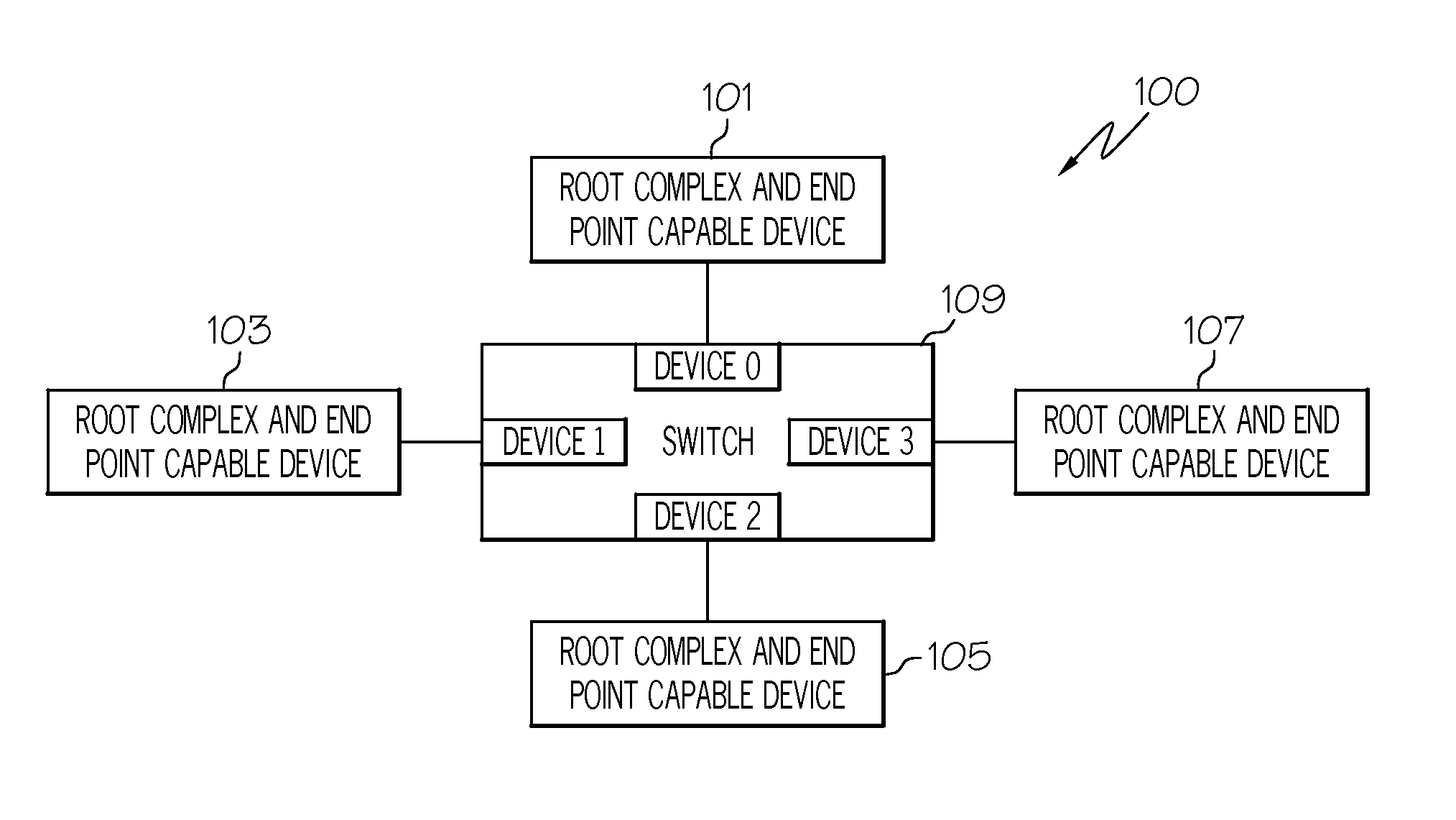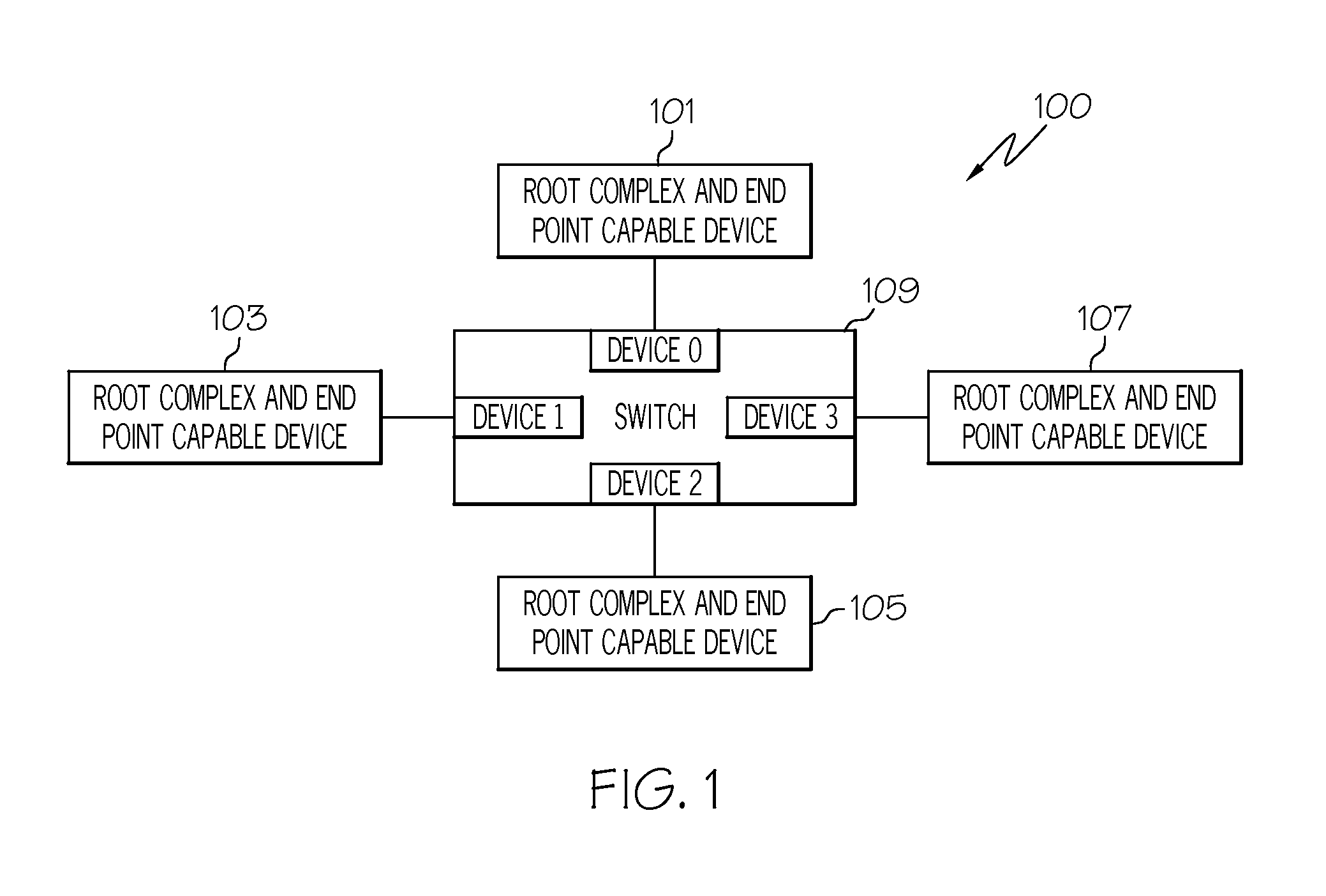Autonomic PCI Express Hardware Detection and Failover Mechanism
a hardware detection and failover mechanism technology, applied in the field of computer system input/output (i/o) buses, can solve the problems of catastrophic system failure, no system recovery mechanism provided by the pcie protocol,
- Summary
- Abstract
- Description
- Claims
- Application Information
AI Technical Summary
Problems solved by technology
Method used
Image
Examples
Embodiment Construction
[0014]Referring now to the drawings, and first to FIG. 1, a system according to the present invention is designated generally by the numeral 100. System 100 includes a plurality of PCI express (PCIe) combination root complex and endpoint capable devices 105-107. Each root complex and endpoint capable device 101-107 is coupled to a switch 109. Each root complex and endpoint capable device 101-107 is configurable to operate in either a root complex mode or an endpoint mode. A root complex device connects a central processing unit (CPU) and memory subsystem to the PCIe fabric. The root complex device generates transaction requests, configuration transaction requests, and memory and I / O requests as well as locked transaction requests on behalf of the CPU. Endpoint devices are devices other than the root complex and switches that are requesters or completers of PCIe transactions. Switch 109 forwards packets between the root complex and endpoint devices using memory, I / O, or configuration...
PUM
 Login to View More
Login to View More Abstract
Description
Claims
Application Information
 Login to View More
Login to View More - R&D
- Intellectual Property
- Life Sciences
- Materials
- Tech Scout
- Unparalleled Data Quality
- Higher Quality Content
- 60% Fewer Hallucinations
Browse by: Latest US Patents, China's latest patents, Technical Efficacy Thesaurus, Application Domain, Technology Topic, Popular Technical Reports.
© 2025 PatSnap. All rights reserved.Legal|Privacy policy|Modern Slavery Act Transparency Statement|Sitemap|About US| Contact US: help@patsnap.com



